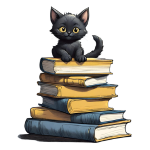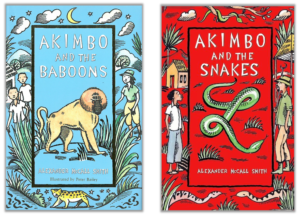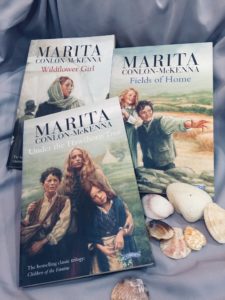I found this book while book hunting in Singapore last March… Bear was a wee month-old baby and was fussing up a bit at the bookstore, so I almost missed this treasure.
Beautifully written by the lovely late Alice McLerran and illustrated by Eric Carle, The Mountain That Loved A Bird is a beautiful tale that made my then 3-year-old Marz cry buckets! This book is good for kids 6 and above, but if your little preschooler enjoys a long story, then this is a keeper.
In this story, a lonely stone mountain lives in the middle of a desert. It is barren and thus, has never had company nor experienced anything beyond heat and cold. It has not much to see either – only the movement of the sun, the course of the moon and the stars when the skies were clear.
A small bird named Joy stops by one day. The mountain feels her sharp claws and her soft feathers and, overcome with amazement, asks her to stay. Unfortunately, Joy cannot comply – there is nothing that can sustain her there. However, she promises to make annual visits in spring and to name her daughter Joy, who in turn will name a daughter Joy and so on so that the mountain will always have a friend visiting once a year.
Ninety-nine springs come and go. Each time the separations become harder to endure. One day, unable to tolerate the loneliness, the mountain’s heart breaks. His tears are a stream which slowly but surely transform it and the land surrounding. Joy brings a seed and over time, the tears become tears of hope and happiness. Eventually, Joy brings not a seed, but a twig. Instead of her usual farewells, she tells the mountain that she has come to stay.
Eric Carle’s signature collages are simply superb! You will notice that the pictures become wonderfully vibrant as the story progresses. There are other versions of this book that you can check out on the author’s site.
For those in Pakistan, there is the Urdu version which the late Ms Mclerran was very happy about. This is what she said about it:
In the spring of 2003, even as Americans were invading Iraq, there was a new edition that seemed to me almost a miracle. In Pakistan – a Muslim country with considerable ambivalence about the Iraq invasion by the US – a non-profit group of educators published a new edition of this story in Urdu, using gentle and pleasing collages by Adeel-uz-Zafar. The printing costs of this book – a story written by an American, published at that point in history – were underwritten by a donation from an Arab oil company!
We have had so many lovely discussions and lessons centred around this book, like:
- friendship & loyalty
- keeping promises
- hope
- birds
- mountains
- climates
- water, streams etc.
- seeds
- colours
You can also read Eric Carle’s The Tiny Seed as an accompaniment.
This review was first published on Imaan.Net in August 2005 and has been updated for this site.



 The family makes preparations for the trip like refurbishing the car and installing the Ultra Glide (a record player) to avoid country/hillbilly music.. Mom meticulously jotted dow nall rest stops and expenses carefully and precisely in her notebook entitled The Watsons Go To Birmingham – 1963. Dad however has other plans and saves money by driving practically non-stop.
The family makes preparations for the trip like refurbishing the car and installing the Ultra Glide (a record player) to avoid country/hillbilly music.. Mom meticulously jotted dow nall rest stops and expenses carefully and precisely in her notebook entitled The Watsons Go To Birmingham – 1963. Dad however has other plans and saves money by driving practically non-stop.

 Finally, Akimbo and his cousin, Kosi, join a visiting scientist, Jen, who is observing a pack of baboons in Akimbo and the Baboons. There is always danger in the wild and this time, a pack of leopards threaten the pack and Jen. Later, Akimbo notices that one of the young baboons is injured and resolves to help it.
Finally, Akimbo and his cousin, Kosi, join a visiting scientist, Jen, who is observing a pack of baboons in Akimbo and the Baboons. There is always danger in the wild and this time, a pack of leopards threaten the pack and Jen. Later, Akimbo notices that one of the young baboons is injured and resolves to help it.
 Armed with nothing but courage and love, they embark on a perilous journey across Ireland to find their great-aunts, Nano and Lena, whom they have only heard about in their mother’s stories. The children sleep in the open and forage for food in the wild and in the farms of dead tenants. They are confronted with death at every turn. They see bodies of those who died with no one to mourn or pray over them and they see the living dead – those so traumatised that they are but shells of their former selves.
Armed with nothing but courage and love, they embark on a perilous journey across Ireland to find their great-aunts, Nano and Lena, whom they have only heard about in their mother’s stories. The children sleep in the open and forage for food in the wild and in the farms of dead tenants. They are confronted with death at every turn. They see bodies of those who died with no one to mourn or pray over them and they see the living dead – those so traumatised that they are but shells of their former selves.